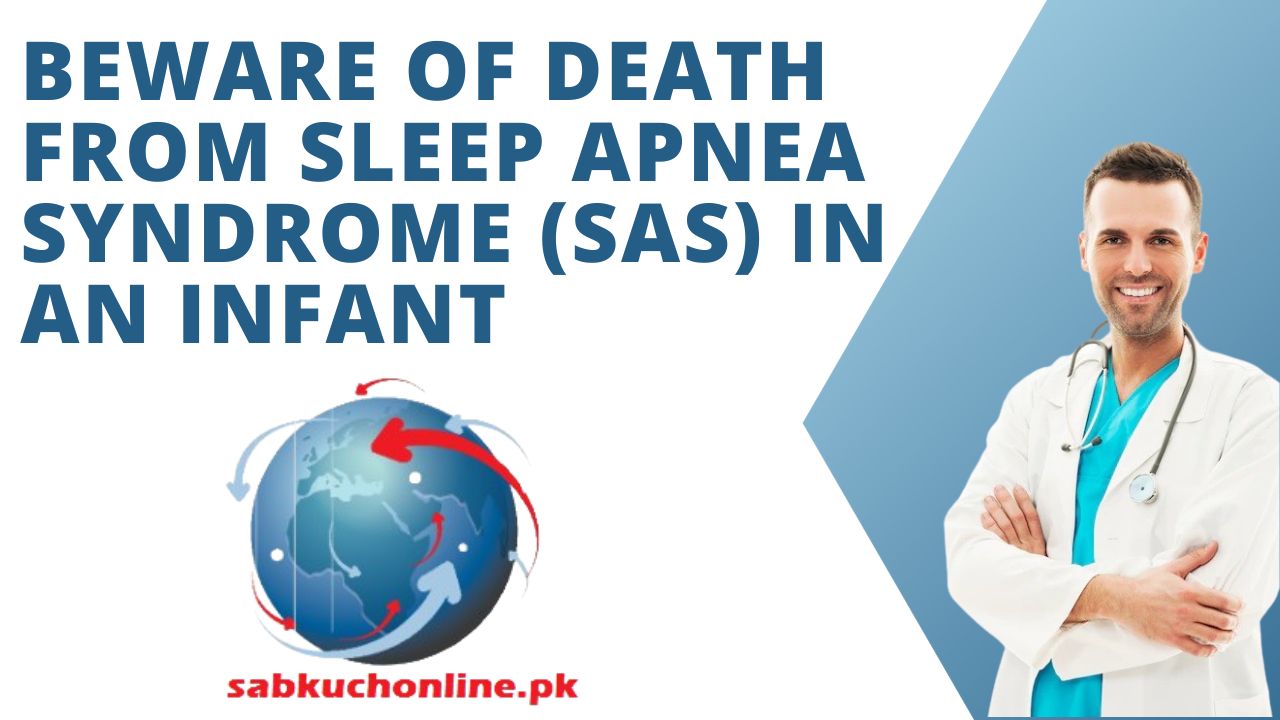Sleep Apnea Syndrome (SAS) in infants is a serious condition that can pose risks to their health and well-being. Sleep apnea is characterized by interruptions in breathing during sleep, leading to decreased oxygen levels in the blood. In infants, SAS can have severe consequences, and awareness of potential risks is crucial. Here are some factors to be aware of regarding the risk of death from Sleep Apnea Syndrome in an infant:
- Central Apnea vs. Obstructive Apnea:
- Central Apnea: In central apnea, breathing stops due to a failure of the brain to send the appropriate signals to the respiratory muscles.
- Obstructive Apnea: In obstructive apnea, breathing stops due to a physical obstruction in the airway.
- Prematurity:
- Premature infants are at an increased risk of SAS. Immature respiratory centers in the brain and underdeveloped airways can contribute to breathing difficulties during sleep.
- Neurological Disorders:
- Infants with certain neurological disorders or developmental issues may be at a higher risk of central apnea.
- Gastroesophageal Reflux (GER):
- GER, where stomach contents flow back into the esophagus, can contribute to obstructive apnea in infants.
- Family History:
- A family history of sleep apnea or sudden infant death syndrome (SIDS) may increase the risk.
- Sleep Position:
- Infants placed on their stomachs to sleep have a higher risk of both central and obstructive apnea. The American Academy of Pediatrics recommends placing infants on their backs to sleep to reduce the risk of SIDS.
- Apnea of Prematurity (AOP):
- AOP is a common condition in premature infants where central apnea episodes are often seen. Most infants outgrow AOP as they mature.
- Monitoring and Diagnosis:
- Continuous monitoring of infants, especially those at higher risk, is crucial. Sleep studies (polysomnography) may be conducted to diagnose and evaluate the severity of sleep apnea.
- Treatment Options:
- Treatment options may include positioning changes, positive airway pressure (PAP) therapy, medications, or surgical interventions depending on the underlying cause.
- Sudden Infant Death Syndrome (SIDS):
- Infants with sleep apnea may be at a higher risk of SIDS. Efforts to create a safe sleep environment, including back sleeping, firm mattresses, and avoidance of soft bedding, are essential.
- Medical Attention:
- Any signs of breathing difficulties, pauses in breathing, or abnormal sleep patterns in an infant should prompt immediate medical attention.
- Parent Education:
- Educating parents and caregivers about safe sleep practices and recognizing signs of respiratory distress is crucial in preventing potential complications.
It’s important for healthcare providers to assess and monitor infants at risk of Sleep Apnea Syndrome and to provide appropriate interventions. Parents and caregivers should be vigilant and seek medical attention if they observe any concerning signs during an infant’s sleep. Early diagnosis and management can significantly improve outcomes and reduce the risk of severe complications, including death, associated with sleep apnea in infants.
